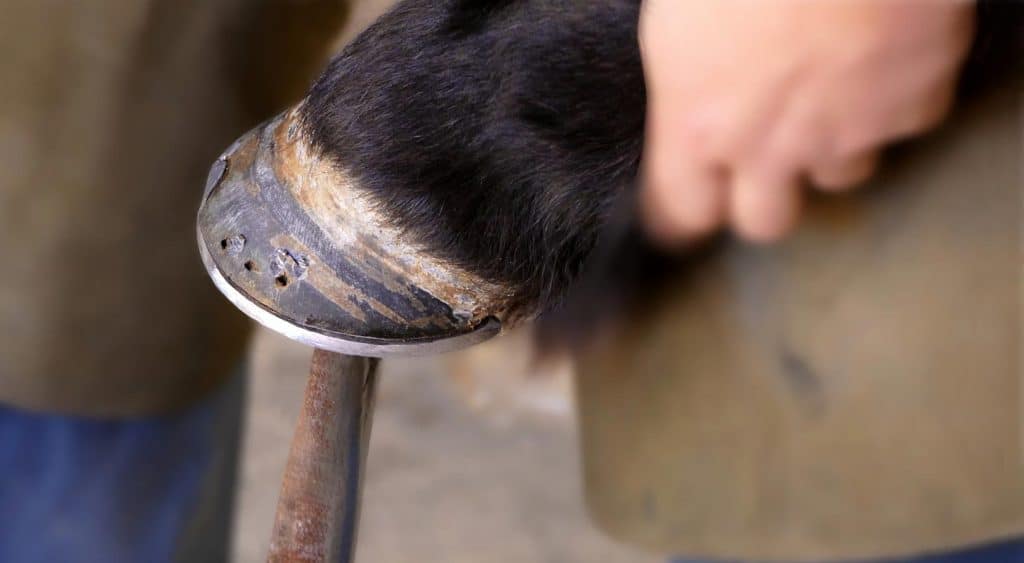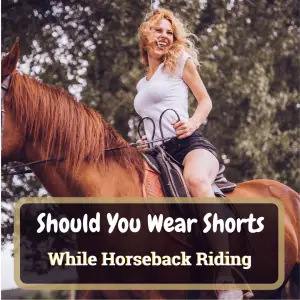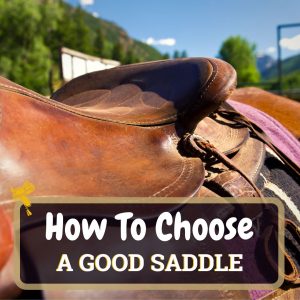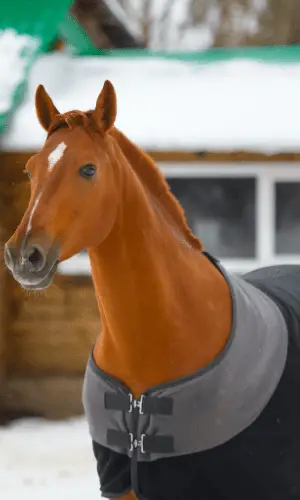I used to leave my horse barefoot. Just like many other horse owners, I grew up knowing that horseshoes are sometimes not the best. My horse started developing many foot issues, and the farrier visits became a little too many, and I thought that was normal. In hindsight, I would have saved my horse from the pain and me from unnecessary expenses by getting him shod. I wish I had known earlier just how helpful horseshoes can be.
Why do horses need shoes?
Shoeing horses is a hoof care practice that goes back several centuries. It was invented because even the best-footed horses need protection when they train, work, or walk for long periods carrying heavy loads. Most a time, those against horseshoeing live in areas with easy terrains, and they don’t work their horses as much. Leaving your horse unshod in adverse terrain and severe working conditions could lead to lameness. Watch out!
Why do horses wear shoes?
Performance
The gait or how a horse moves depends much on the structure of their feet. Shoeing a horse helps to improve performance by correcting gait. Gait correction with horseshoes works exceptionally well on young horses before the foot matures and takes on an uncorrectable outer shape.
So before deciding to shoe your horse for performance purposes, assess its hoof situation first to find out if the posture abnormality is caused by hoof length or trimming errors. If the problem is as severe as club foot where one foot is lower than the other, then you must explore shoeing.
When there is a mismatch in angulation between feet, the two legs cannot move uniformly. That kills speed. Shoeing offers a natural way to equalize the height and solve performance issues that result from mismatched feet.
Protection
Horseshoes protect the foot from bruising, splitting, and wearing. They provide working comfort and also prevent slippage when the animal moves on ice or slippery ground. Horseshoes protect the feet of horses from wearing down excessively. It also prevents the hoof wall from splitting.
Proper shoeing keeps the animal working in comfort. It helps to achieve a balanced foot with a normal axis and helps minimize injuries. The right type of horseshoeing keeps the pastern and hoof axis unbroken. It reduces uneven concussion on the foot and can help to cure hoof diseases and defects.
Medical
Horseshoes are strongly encouraged for medical reasons. Shoeing safeguards your animal from the risk of laminitis. The latter is an inflammation of the laminae in the hoof and manifests as lameness, warm feet, and sensitivity around the area.
Laminitis is caused by a series of factors that can all be resolved by getting your horse shod. These include trauma and concussion from running on hard surfaces, stones, and sharp objects. Laminitis is also a result of cold weather, colic, and taxaema. Shoeing is an effective remediation strategy against laminitis.
Other foot issues that compel the need for shoeing include:
- Cracks
- Hoof recession
- Collapsed heels

What are horseshoes made of?
A horseshoe is typically made of metal or polymer materials. The use of different materials produces varying weights of the shoe. You must know that weight influences the biomechanics and performance of your horse. A heavy shoe needs the animal to expend more energy in acceleration and deceleration in every limb cycle. A lighter shoe is good for performance.
Different materials also have varying degrees of durability, cushioning, and, cost-effectiveness. These are the critical factors for discussion between an owner, farrier, and vet with regards to horseshoeing.
The standard horseshoe is made of steel or aluminum designed to represent the shape of the hoof wall in relation to the ground. For proper fitting, the shoe needs to be wide enough to cover the hoof wall plus the adjoining sole. The best shoe is also flat in relation to the ground surface.
Note that horseshoes are designed differently based on the animals:
- Breed type
- Movement traits (whether the animal is a trotter or pacer)
- Function (whether it’s a workhorse or a racehorse)
How often do shoes need to be replaced?
Regular shoe replacement is part of the best practices for better hoof health. As the owner, you must always be on the watch for indicators of loosening on the shoes. Worn horseshoes are also a danger; instead of preventing posture issues, laminitis, and other horse hoof problems, they can accelerate them
Experts concur that horseshoes need replacement after every 6 weeks. That’s the general rule of thumb. The process of changing horseshoes also allows for hoof trimming and resetting. You can only attain the right postural balance for your animal if the shoe fits right.
The hoof never stops growing even when the shoe is on. When the hoof grows, the nails around the shoe become loose. It, therefore, becomes problematic for the animal to keep the shoe on—this slippage can pose a severe danger to the animal’s foot. This is why you need regular trimming and resetting for your horse hooves and shoes.
There are tell-tale signs that your animal needs re-shoeing. Don’t ignore them. The signs include:
- Loose nails pushing up from the hoof wall
- Protruding nails on the out or underside of the shoe
- Shoe loosens or comes off
- Hoof has started to overgrow the shoe
- The shoe has worn out unevenly or excessively
- The shoe sits twisted on the foot
If you observe the 6-week rule, you won’t wait for these signs. These signs could mean that your animal is already sustaining damage to its hoof structure and tendons and ligaments. Usually, if there is too much wear to the metal, the shoe must be replaced. If it is an issue to do with overgrown hoofs, these can simply be trimmed as the old shoe is reset.

Are horseshoes good for horses?
The shoeing versus barefoot debate has been in existence longer than any of us. There are compelling reasons for why you might have to leave your animal barefoot, and there are good reasons for shoeing.
If the animal has the right gait and hoof-leg contouring, and if they forage for their feed over long distances and do not carry heavy loads, don’t shoe them. These conditions naturally create better hoof health.
However if you are a modern horse owner like me who keeps your horse in a terrain that is plowed/irrigated and the animal does not walk long distances while grazing, you must consider shoeing. These animals, along with those that walk on concrete, wet stall bedding and roadways, have susceptibility for weaker and unbalanced hooves. Here is how:
- In more humid regions, damp pastures and mushier soils soften the feet and make them susceptible to splitting
- In stalls where there is constant exposure to urine, the ammonia in it weakens the keratin structure of the hooves
- Horses that pull heavier weight or run faster need protection for their feet and postural alignment
Are horseshoes painful to horses?
Horse hooves are made of the same material as the human finger nail which is keratin. The horse doesn’t feel any pain during the shoeing or the resetting process. Horses do not feel pain when walking around in the shoes.
However, the animal can feel pain in these situations:
- When an inexperienced farrier drives the nails too deep
- When you ride hard immediately after shoeing
What are the dangers of horseshoes?
Brittle Feet
If the horseshoes are left on for long, they become loose and might pull off big chunks of material from the hoof structure in this process. This makes the hoofs weak and susceptible to cracking. Brittle hooves are painful and can lead to lameness.
Bad shoe
These are shoes with inferior designs. They fail to provide the right protection and cushioning for your animals’ feet. Some shoe designs interfere with the natural structure of the horse’ hoof, making it prone to splitting. Other designs produce excess vibrations that harm the tissues around the hoof. Some shoe types may also interfere with the traction and grip of the hoof on slippery surfaces.
Improper fitting of shoes
Shoes that are too large or too small spell trouble for the horse. If a shoe doesn’t fit well, it could lead to cracking and deformation of the hoof. If that is not addressed quickly, the issues could accelerate to soft tissue damage or permanent postural deformity in the feet.
Inexperienced or inept farrier
If an inexperienced farrier drives the nails deeper than is necessary, that could cause many hoof problems for your animal. For starters, it will be a painful experience for your animal, and they might sustain damage to the living tissues of the hoof. This form of horseshoe fitting also weakens the feet making them excessively brittle.
Advantages of shoeing a horse
- Hoof protection and strengthening
- Performance improvement
- Medical protection against laminitis and other hoof conditions
- Shock absorption for horses that carry heavy loads
- Traction on slippery terrain
Disadvantages of shoeing a horse
- Brittle feet and damage from nails and nail holes
- Cracking hoofs and loss of balance
- The risk of injuries when working with inexperienced carriers
The Bottom Line
There are strong arguments for shoeing a horse. There are also good reasons for leaving him barefoot. You are now a knowledgeable horse owner, and you can make an informed decision.








